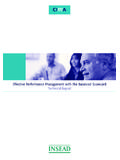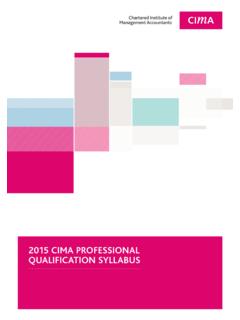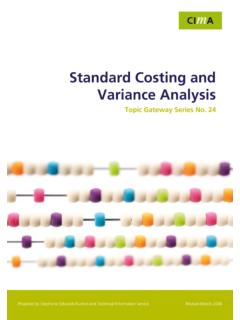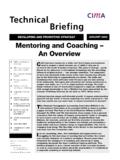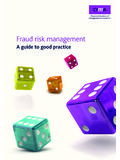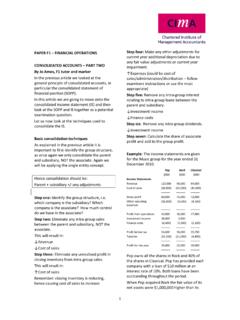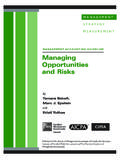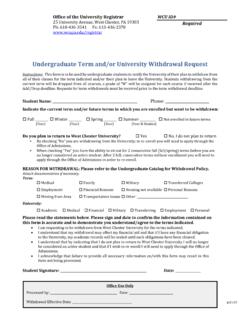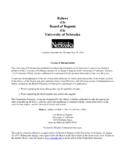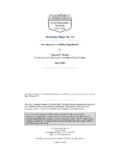Transcription of Financial Instruments: FRS 139 (Including IFRS 9; Malaysia ...
1 ContentsTopic 1 Identifying Financial instruments , scope of FRS 139 and transition to FRS 139 Identifying Financial instruments Identifying Financial instruments in practice Understanding the definition under FRS 132 for Financial instruments , Financial assets, Financial liabilities and equity instruments The meaning of contract and contractual in Financial instruments Identifying the issuer of Financial instruments Identifying Financial instruments in practice Understanding contractual rights and contractual obligations Rights and obligations that are non-contractual Understanding derivative and non-derivative contract How to identity a transaction that is settled in own equity instruments A transaction that is settled in own equity instrument vs share-based paymentsScope and scope exclusion of FRS 139 Identifying Financial instruments that are outside the scope of FRS 139 An in depth analysis of scope inclusion and exclusion: How to handle subsidiaries, associates and jointly controlled entities Leases: lesser and lessee scope Issuer of equity instruments Insurance contracts vs Financial guarantee contracts Contract in business combination Loan commitments Provisions Share-based payments Contract to buy or sell non- Financial items Commodity derivative contracts to be settled net in cash vs physical deliveryAppendix.
2 FRS 139 Transitional provisions Transitional provisions for first time adoption of FRS 139 Effect of transition on hedge accounting Impact on Financial statements on transition to FRS 139 Topic 2 Recognition and derecognition of Financial instrumentsRecognition How to identify and handle initial recognition of Financial assets and Financial liabilities Special case for Financial guarantee contracts Inter-corporate guarantee Unrelated party guarantee Regular way purchase and sale of Financial assets Choose accounting policies for settlement date or trade date Impact on Financial statements of the two accounting policiesDerecognition Handling the complex rules on derecognising Financial assets and Financial liabilities Derecognition of Financial assets Evaluating transfer of substantially all the risk and reward Transfers that qualify for derecognition Transfers that do not qualify for derecognition Accounting for derecognition of Financial assets Derecognition of Financial liabilities Identifying modification of substantial terms Accounting for derecognition of Financial liabilities Special case of securitisationTopic 3 Classification and measurement considerations Initial classification Initial and subsequent measurement of Financial liability Rules on classifying the four categories of Financial assets: Financial assets at fair value through profit or loss Held-to-maturity investments Loans and receivables Available-for-sale Financial assets Classification for unquoted equity investments Subsequent reclassification Rules on reclassifications of Financial assets Gains and losses on reclassifications The stringent rules of Financial instruments through profit or loss Tainting rules for held-to-maturity Financial assets instruments : FRS 139 (Including IFRS 9.)
3 Malaysia ED69)Date: 30 August 2010, MondayTime: : Renaissance Hotel, MelakaSBL Scheme Claimable**subject to PSMB issuesInitial and subsequent measurement rules Dealing with transaction costs Dealing with intercompany lendings; interest free deposits with counterparties Accounting for gains and loss of Financial assets and Financial liabilitiesFair value measurement techniques Market price vs mathematical model Types of market prices Introduction to various mathematical models Using market data to estimate fair value Accounting for day 1 gain and loss Fair value accounting for available for sale Financial assets Special case: estimating fair value of Financial guarantee contracts using interest differential methodAmotised cost using effective interest method What is the meaning of effective interest rate How to find effective interest rate Computational format for amortised costs Accounting for amortised cost using effective interest method Applying amortised cost method to: Complex financing Fixed rate instruments Floating rate instruments Accounting for change of interest rate due to.
4 Market rate change Alteration of terms The difference between amortised cost and fair valueTopic 4 Impairment of Financial Assets Objective evidence of impairment for: Uncollectibility of Financial assets Equity investment Impairment and reversal of impairment on Financial assets Financial assets carried at amortised cost Financial assets carried at cost Available for sale Financial assetsTopic 5 Derivative accounting and hedge accounting Accounting for derivatives: currency forward and future contracts Hedging: What instruments qualify as hedge instruments Designation of hedging instruments What are qualifying hedge items Designation of Financial items as hedge items Introduction to hedge accounting: Fair value hedges for receivables and payables Cash flow hedges for future anticipated cash flowsTopic 6 IFRS 9 Financial instruments Classification and measurement Amortised cost and impairment Future changesAbout the speakerMr Danny Tan has over 30 years of working experience in public practice, commerce and industry.
5 He was trained with a firm of Chartered Accountants in London where he worked for over 10 years in audit and consultancy. He also held the positions of business development and business operations manager with two UK multinational companies based in London for five years. Danny also has two years of public practice experience in Malaysia . Danny specialises in International Financial Reporting Standards (IFRSs) and for the last 15 years, he is a partner of a firm providing training and consulting in the areas of preparing and presenting Financial statements in accordance with IFRSs. He conducts training for regulators, professional institutions, public listed companies and public practice in several countries in Europe, Middle East and Asia. He is currently serving as a project manager to the Malaysian Accounting Standards Board in several working holds an Honours Degree in Economics (major in finance and investment) from Manchester Metropolitan University (UK), MBA from Heriot-Watt University (UK) and Master in Advance Business Practice from University of South Australia.
6 He is a fellow member of the Chartered Instituted of Management Accountants, a fellow member of the Association of Chartered Certified Accountants, a member of the Malaysian Institute of Accountants and an associate member of the Chartered Tax Institute of contact ID/MIA ref finalistCIMA studentLTP collegesMIA memberCT/MEG companiesNon memberPlease tick () where applicablePlease also register my friend/colleague for this course:DesignationCompanyAddressTel Fax EmailNameCIMA contact ID/MIA ref finalistCIMA studentLTP collegesMIA memberCT/MEG companiesNon memberPlease tick () where applicableDesignationCompanyAddressTel Fax EmailRegistration form Yes, please register me for the course Financial instruments : FRS 139 (Including IFRS 9; Malaysia ED69) on 30 August 2010, Monday at Renaissance Hotel, Jalan Bendahara, 75100 Melaka from wish to utilise my CPD Credit Point (please indicate no.)
7 Of points) for this course. Balance of RM will be paid by money order/chequenade payable to CIMA Malaysia Division .Registration enquiries:Please forward all enquiries and registrations to:The Chartered Institute of Management AccountantsMalaysia DivisionLots & , Level 1, KPMG Tower8 First Avenue, Bandar Utama47800 Petaling Jaya, Selangor Darul fees:RM StudentRM Passed Finalist/MembersRM MIA Members/CT/MEG, LTP CollegesRM Non-MembersRegistration starts at is inclusive of course materials, tea breaks and deadline:20 August 2010 subject to availability of seats Terms and conditions1 All CPD credit points are Confirmation of registration will only be sent to participants upon receipt of full payment of registration Registration fees are claimable under the SBL scheme, subject to PSMB Admittance will only be permitted upon receipt of full payment. Requests for invoices must be made in writing on your company s letterhead and duly Cancellation policy: please inform in writing if you wish to cancel your registration.
8 No refunds will be given for cancellations by participants less than 7 days before the course. A 20% administration charge will be retained upon other cancellation. You may send a substitute participant if you wish to avoid cancellation Malaysia Division reserves the right to make changes to the venue, date or speaker, including but not limited to cancellation of the seminar warranted by whatsoevercircumstances or S. SaraswathyT. 03 77 230 337 F. 03 77 230 231E. SarithaT. 03 77 230 286 E.

